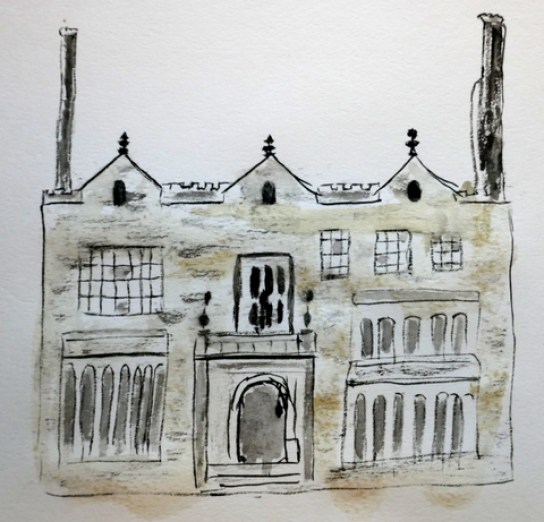Andy Grinter from Green Dragon Framing talked about picture framing. He has been framing pictures for fifteen years.
He talked briefly about the history of framing including in ancient Egypt and in 13th century Europe. Early church paintings were often included in structures such as altar pieces or tabernacles. As art became more portable, frames were needed. The renaissance of art in Europe created demand for Italian carved frames.
In the 17th century the trend was for frames to match the furniture. Impressionists adopted simple white frames. Subsequent owners re-framed them. Only one Van Gough painting remains in its original frame despite the artist painting to match to frames.
A frame supports the painting and creates an edge. Framing is part of the design of the painting, the mount board adds distance and colour. It adds value and helps to sell a painting. Buyers often want a frame to match their decor.
Framing can be expensive, especially as good quality materials should be used, such as conservation quality mount board to preserve the white of the bevel edge, and good quality wood such as oak and ash. The lighter woods are more popular than the darker woods that were popular in the past.
A major breakthrough in framing was the development of flat glass and later float glass. Mr Grinter showed us some anti-reflective Schott glass alongside ordinary framing glass and low reflection etched glass. The anti-reflective is very clear and will enhance a painting but is quite expensive. He also mentioned that linen canvas is worth considering for oil painting as it is more stable than cotton and takes oil better.
Mr Grinter showed the members how a double mount can improve the look of a painting with a coloured outline.


He also showed how a coloured mount can overwhelm a painting with too much colour. The white or cream outer mount reduces the impact.


Mr Grinter also showed more complex mounts with some depth, creating shadows. He also paints mounts to create more subtle colours along the edges and along the lines created by the mount boards.

Andy Grinter trades as Green Dragon Framing at Art in the Mill in Green Dragon Yard, Knaresborough.
Website: http://www.artinthemill.co.uk
















































































 Her interest in old objects developed into creating collages of old photographs, old family stories, envelopes, animal bones and old objects. These represent past connections and emotions. They could be tales of unrequited love or separation.
Her interest in old objects developed into creating collages of old photographs, old family stories, envelopes, animal bones and old objects. These represent past connections and emotions. They could be tales of unrequited love or separation.












